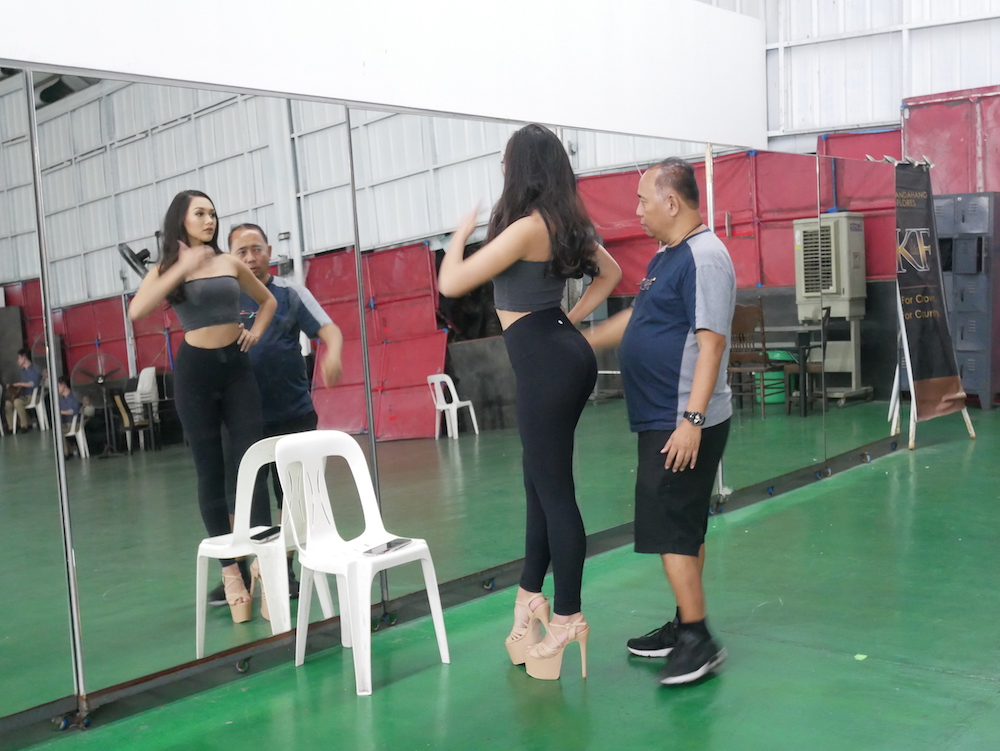A running joke among pageant fanatics is that what the World Cup or NBA Finals are to straight men, the Miss Universe contest is to the gay Pinoy man.
Gay men play a crucial role in the world of beauty pageants here in the Philippines, both as fans and as industry insiders who work tirelessly behind-the-scenes to train, dress, and promote pageant contestants into candidates capable of winning the crown.
By working in these pageants, they gain lifelong friends who become like family. At the same time, it gives them an opportunity to bring honor to their country and even boost their own careers. Others simply want to live vicariously through these beauty queens.
As fans across the country look forward to this year’s Miss Universe contest — taking place in Bangkok on Monday, Dec. 17 — Coconuts Manila spoke to some of the men whose passion for pageants take the beauty queen scene to the next level.
Lifelong fans
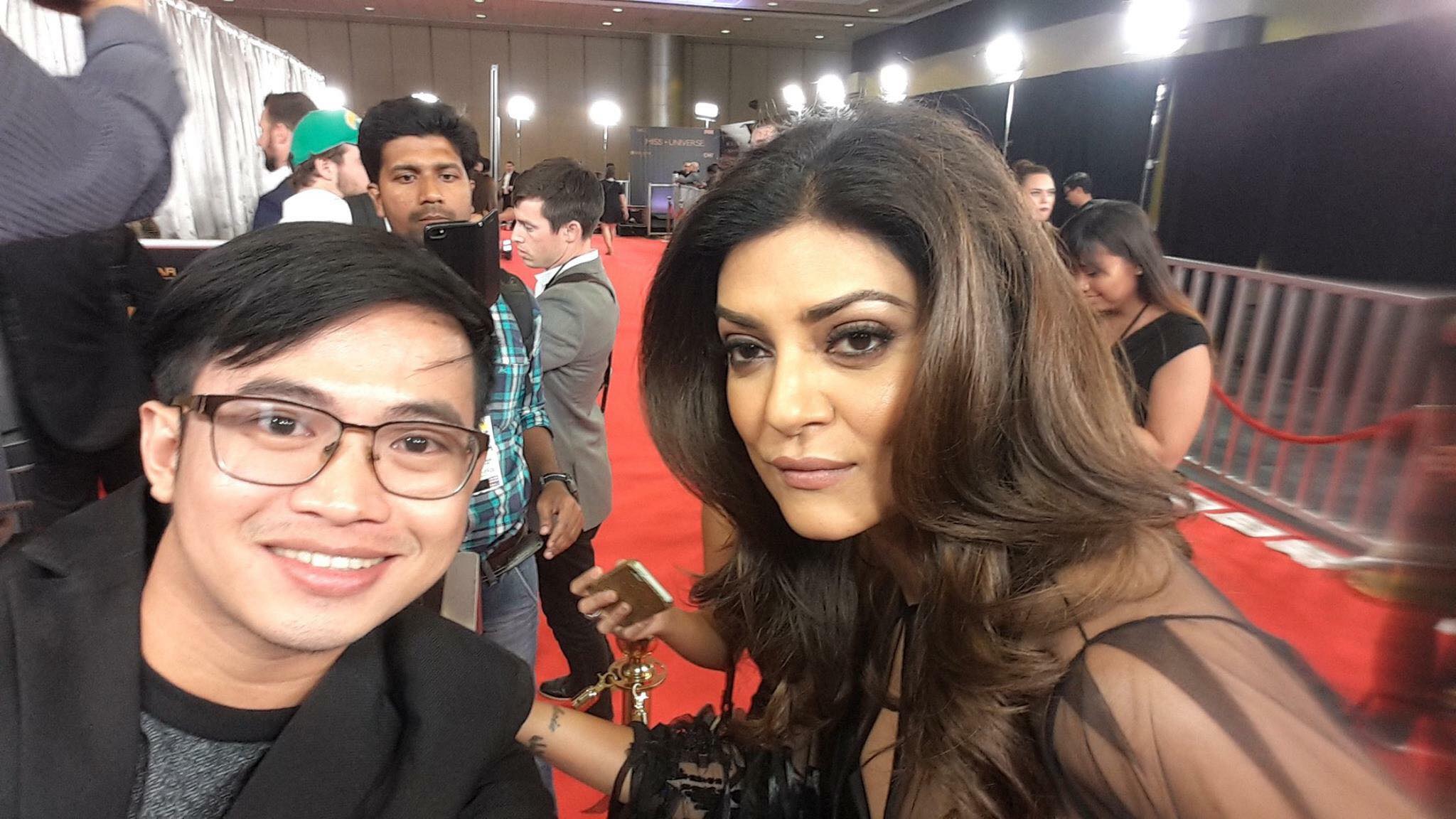
Looking at the bevy of immaculately coiffed women on the red carpet of the 2016 Miss Universe pageant in Pasay City, 28-year-old pageant blogger Arvin Cabachete couldn’t believe that the scene before him was playing out in real life.
Growing up as a gay boy in a small town, he used to spend endless hours watching beauty pageants on television. Back in his hometown of Kawayan, Biliran, Cabachete was hesitant to express his sexuality during his youth. He feared the ostracism that would unfold in his community, which, living in a conservative small town, felt inevitable.
From the privacy of his own room, however, he could watch pageants and sashay like the female contestants on screen, acting fabulous without fear of reproach. He made a promise to himself back then — someday, he would see Miss Universe, the grand dame of all pageants, live and in person.
That dream became reality in January 2017. Cabachete’s blog about beauty pageants had landed him a seat at the show — standing on the red carpet with former Miss Universe winners Sushmita Sen and Pia Wurtzbach, to boot.
Cabachete recounted meeting the Hyderabad-born Sen, one of his favorite beauty queens. As he chatted with — and admittedly fawned over — her, it hit Cabachete how far he’d come since he was a young boy strutting in front of his TV.
“I thought, ‘I used to watch her on YouTube. Now, she’s right in front of me.’”
Cabachete’s fervor for beauty pageants is something he shares with thousands of gay Filipino men, a small number of whom play a huge part in the development and success of candidates. While these pageant insiders may not appear to be high-profile to the general public, within the industry, these men have created an inner network of lifelong friends, support groups, and tons of street cred.
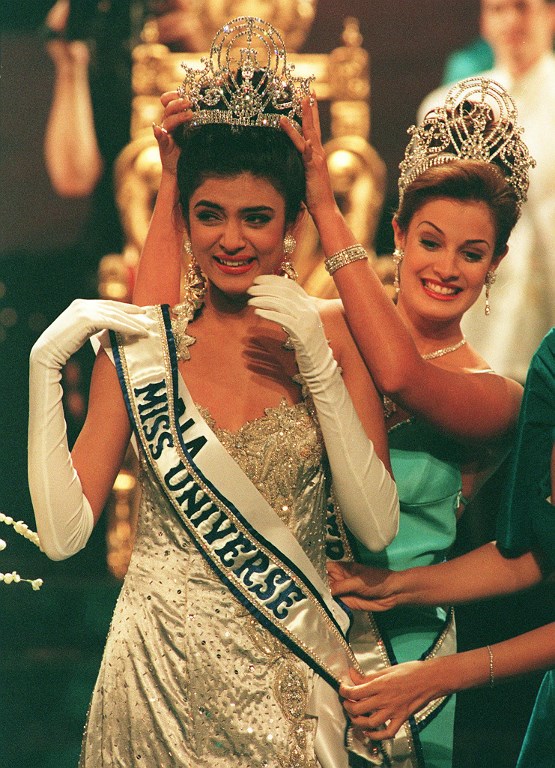
A pageant-crazy country
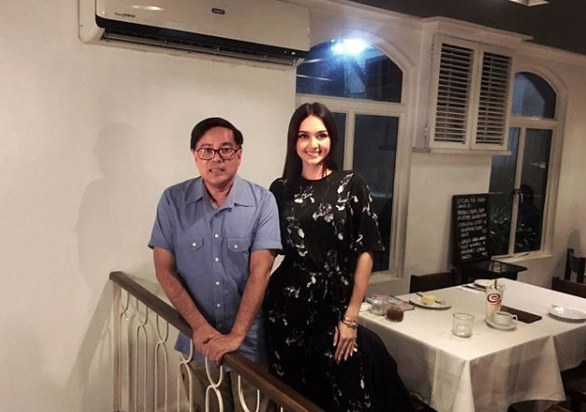
According to professor Jose Wendell Capili, editor and co-contributor to the book Mabuhay to Beauty! Profiles of Beauties and Essays on Pageants, gay men have long been drawn to behind-the-scenes work in the pageant industry.
During his research for the book, Capili spoke to a well-known gay Filipino fashion designer who had been discovering and dressing up beauty pageant hopefuls since the 1980s, Renee Salud. According to Capili, the designer said that helping women achieve their pageant dreams was a way to fulfill his own fantasy of being a contestant on stage.
“He wanted to be Miss Universe, but since he couldn’t be one, [he became involved backstage instead]. I think for [members of the] LGBTQ+ community, for some of them, it’s an extension, [a fulfillment] of their fantasy [to be a beauty queen],” Capili said.
For others, especially the trainers, seeing their students win in international competitions is their way of bringing honor to their home country.
“It’s a kind of nationalistic [act] for them. Their way of giving back [to the Philippines] is by training beauty queens and [helping them] win titles [internationally]. It’s their way of expressing their love and devotion to the country,” he said.
Anyone familiar with the culture understands this Pinoy Pride that Capili describes. A single Filipino’s achievement is the achievement of everyone. Thus, when a Filipino woman walks on stage representing the country, she carries on stage the hopes and dreams of everyone — gay men included.
“Whenever we see our candidate wearing a sash that says ‘Miss Philippines,’ we feel so proud,” said Cabachete. “They’re representing our country [in the competition]. Even if we’re not the one competing there, it’s like we are there [on stage] because they’re wearing the Philippine sash.”
That sense of national pride is echoed among men who work behind-the-scenes to bring beauty pageants to life. They don’t receive much in the way of public recognition for their efforts, but within the industry, these men — many of whom are gay — are credited for elevating the standards for pageant contestants representing the Philippines.
The queen-maker
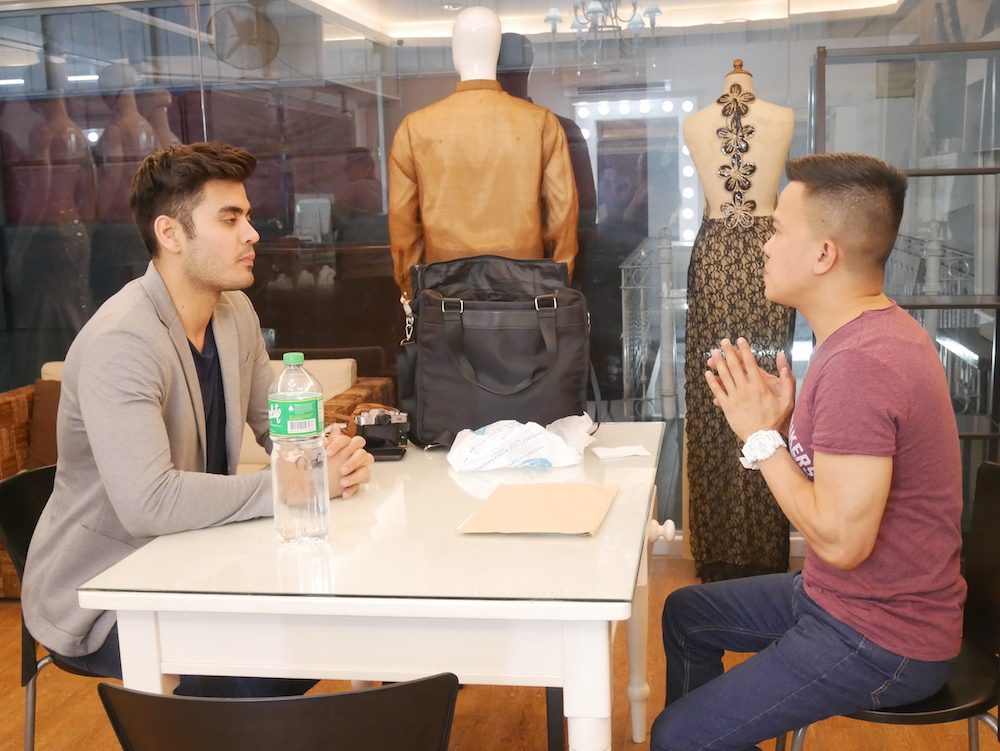
It’s 9pm on a recent weeknight, and Coconuts Manila is inside a two-story warehouse near Tomas Morato Avenue.
Most people are probably at home, finishing up their dinners. Some are still mired in Quezon City traffic. Event director Rodgil Flores, however, is teaching Filipino-Canadian beauty queen Kimi Mugford how to walk gracefully — in six-inch heels.
Flores is a patient mentor. He gently corrects Mugford’s posture and walk, puts his hands on her shoulders to direct the way they should move with each step.
“A gay person has the traits of both sexes,” he told us. “Our womanly side is very nurturing. Our male side makes us tough. We really push them. It’s like the yin and yang.”
The 51-year-old Flores is one of the country’s leading pageant trainers. His camp, Kagandahang Flores — “Flores Beauty,” but usually referred to as just KF — has produced some of the most prominent Filipina beauty queens in recent memory: Precious Lara Quigaman (Miss International 2005), Bea Rose Santiago (Miss International 2013), and Karen Ibasco (Miss Earth 2017).
KF’s motto: “For crown. For country.”
Flores and his team of nine teach aspiring queens everything they need to know to win, from acing the Q&A portion of the contest to walking, makeup, and hair styling. They also sponsor gym memberships, which come complete with a personal trainer. KF also helps contestants source their costumes and gowns. It’s full-service to the highest degree.
Also notable is the fact that KF doesn’t charge Filipino students a single cent for their services. This means that despite its success, Flores and the rest of the KF team — many of them also gay men — still need to keep their day jobs. But that’s fine by them. Their love for pageants bonds them together, and, they simply like working with each other.
“I think that’s what makes KF different,” said Flores, “We treat each other like family.”
Flores grew up in Pateros where his father and grandfather worked as politicians. He wasn’t an outgoing child. He tells us that he didn’t like speaking much back then. His life revolved around school and home life. Then, Miss Universe 1974 arrived in Manila, and Flores’ world changed.
“They said the world stopped spinning for Filipinos because [at the time] the Miss Universe is all you can see on TV. I was fascinated with it. That instilled my love for pageants,” he said.
When he grew up, he toyed with the idea of becoming a makeup artist but was worried about how his parents would feel about that career choice. He decided to become a chemical engineer instead.
In 1995, however, a then-colleague at a Japanese firm who knew about Flores’ obsession with pageants asked him to guide a female friend who hoped to win the beauty contest Beautiful Girl, a segment in the long-running noontime show Eat Bulaga.
Flores accepted and worked alongside his cousin Gio Flores, a fellow pageant fanatic, to coach the woman — who ended up winning. That incident convinced Flores to change his life. In 1996, Flores left his successful career as an engineer and founded KF with Gio.
One pageant insider told Coconuts Manila that before the establishment of training camps such as KF, the process of coaching contestants was typically done in a rush, with very little attention to detail or strategy applied. But, with the arrival of KF and its rival camp Aces and Queens, beauty queens in the Philippines became like athletes: trained methodically, and trained to win.
Explains Flores: “You have to do this 24/7. When we teach them the right posture, the right [walk], when you leave [this place], you cannot go back to the way you were. You are like an athlete,” he said.
Flores said that one of his protégés, Maggie Wilson-Consunji, even coined the term “beauty athletes” to describe today’s contestants.
Due to KF’s high-profile success, many women from overseas have gone straight to Flores seeking help with their pageant training. The most successful non-Filipinos coached by his camp: Miss Earth 2018 Nguyễn Phương Khánh, the first Vietnamese to win a major beauty title, and Miss International 2017 Kevin Lilliana Junaedy, the first Indonesian to win one of the big pageants.
It isn’t lost on many people that training women like Nguyễn and Junaedy goes against the original motto of KF. There are plenty of posts on Facebook slamming KF for teaching “foreigners.” Flores is aware of the criticism.
“They criticize me — why I’m entertaining [other nationalities],” he said, with a hint of annoyance. “[But international contestants are] very insistent, and you can see their intent [and determination] to learn — so why not?”
He said his Filipino students are still his top priority: “[I’ll train other nationalities] as long as our girls are not compromised.”
Training sessions are exhausting, not just for his students, but also for him. Sometimes they last until the wee hours of the morning. “With the advent of social media, I’m flooded with requests. There are people who still need my help,” said Flores.
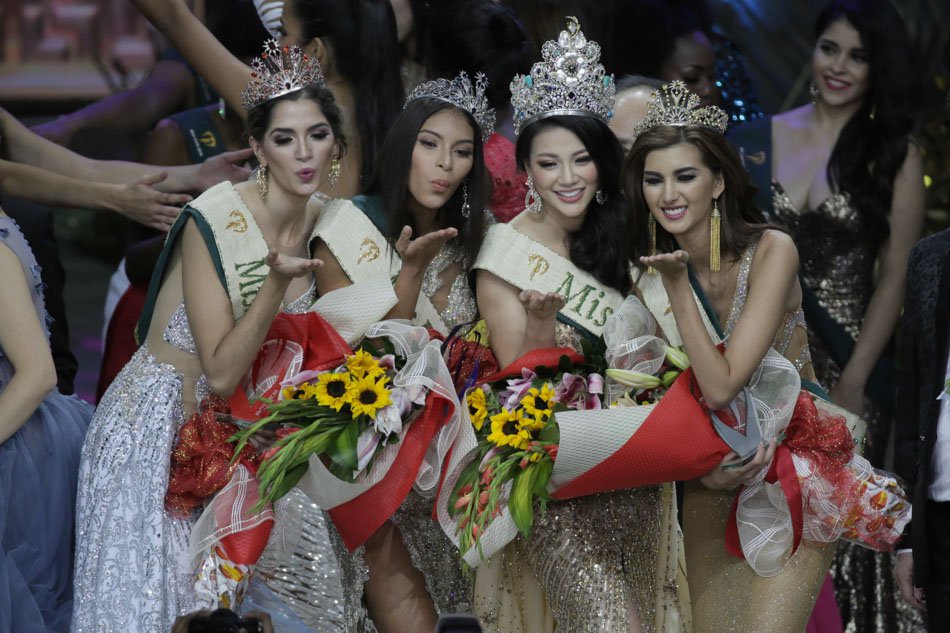
The designer
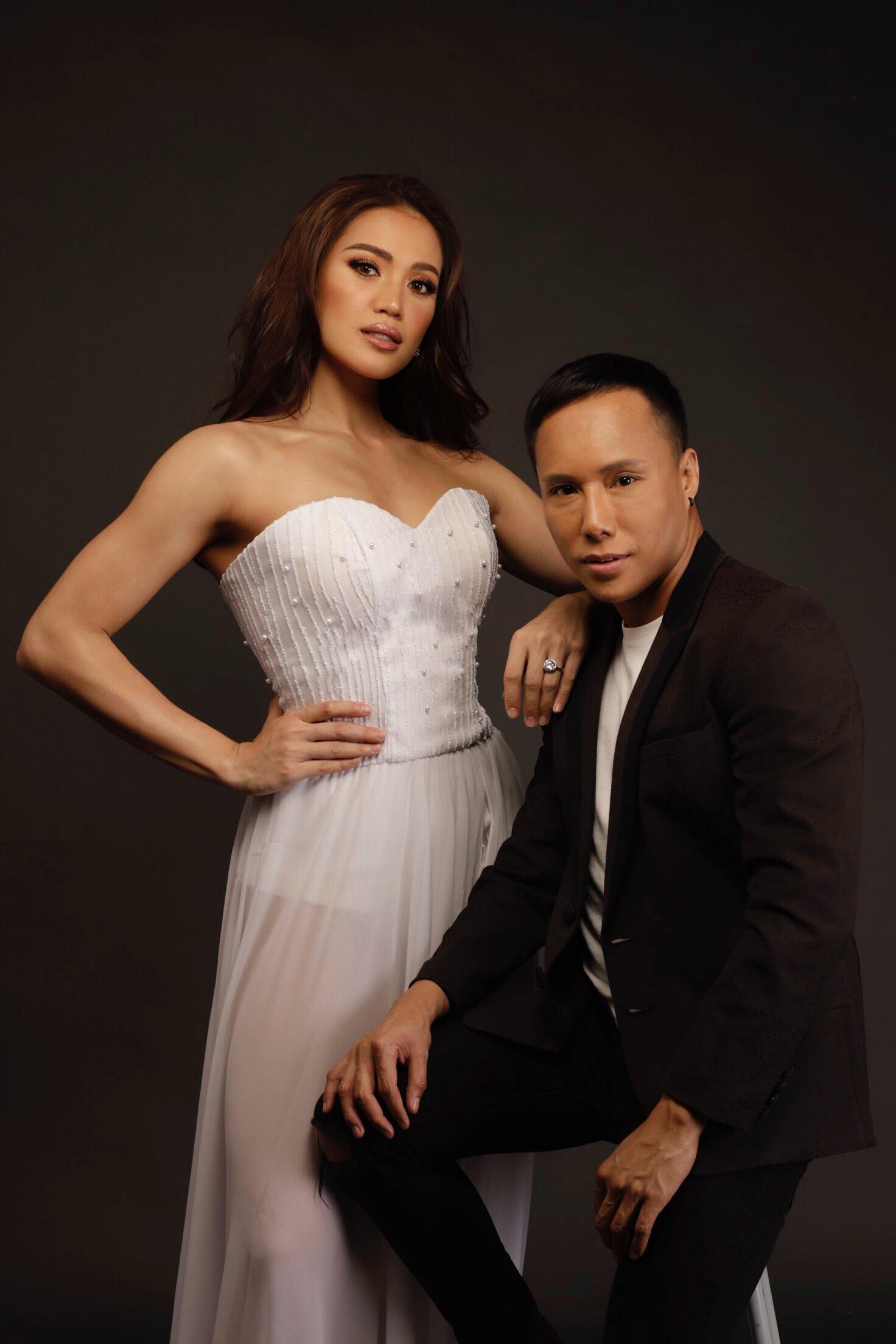
While Flores is happy to be involved in pageants without getting paid for the bulk of it, fashion designer Nat Manilag makes his motivations clear — he dresses up pageant queens as a platform for publicity.
Talking to Coconuts in his nondescript atelier in Quezon City, Manilag said that by dressing up local queens and posting photos of the designs on Instagram, he was able to build enough commercial interest to mount a fashion show in Guam, where he now has a handful of customers.
Like many male fans, Manilag’s love for pageants started when he was child.
He recalls the memory of watching the 1994 Miss Universe contest on television, in his hometown in Agusan del Norte, a sparsely populated agricultural province in Mindanao. He remembers the moment distinctly because, in one pre-pageant event, there were contestants who wore the terno — the national costume for women — that were created by Filipino designers.
“I thought, ‘Ay, I want that, too. Soon, I will become part of that,’” said Manilag.
This dream didn’t get off to the smoothest start. Manilag came out of college with a business degree because his family felt an arts-related education would be too impractical. Even after graduation, however, he still felt strongly compelled to pursue a career in fashion, so in 1997, he left Agusan for Manila to try his luck in the industry.
After bouncing around in several loosely related jobs, Manilag’s turning point came when he met fashion designer Salud at an event. Mama Renee, as many call him, is akin to a fairy godmother in the pageant world — throughout his career, he’s discovered and dressed many famous models and prominent beauty queens.
Salud advised Manilag to start taking part-time classes at the Fashion Institute of the Philippines. It was the push that Manilag needed — following those courses, he went to London’s Central Saint Martins, one of the world’s top fashion design schools.
Upon graduating, Manilag returned to Manila and began designing clothes for beauty queens. One of the most memorable was a glittering red gown he created for Jennifer Hammond, who competed at the 2016 Miss Philippines pageant.
He still remembers the night of the competition vividly. Sitting in the audience at the Smart-Araneta Coliseum in Quezon City, Manilag recalls the shock that washed over his body when his and Hammond’s names were called for winning the Best Gown award.
That red dress remains in his office, right beside his desk — a memento from the night when his childhood promise to himself came true. Manilag said it remains a client favorite and still serves as an inspiration for many prom dress and wedding gown designs.
We ask if Manilag is keen to participate in another pageant. He said, given the chance, he would do it again, because “you can’t join, but [when you dress up a woman] you feel that you’re one of the contestants.”
The Road to the Crown
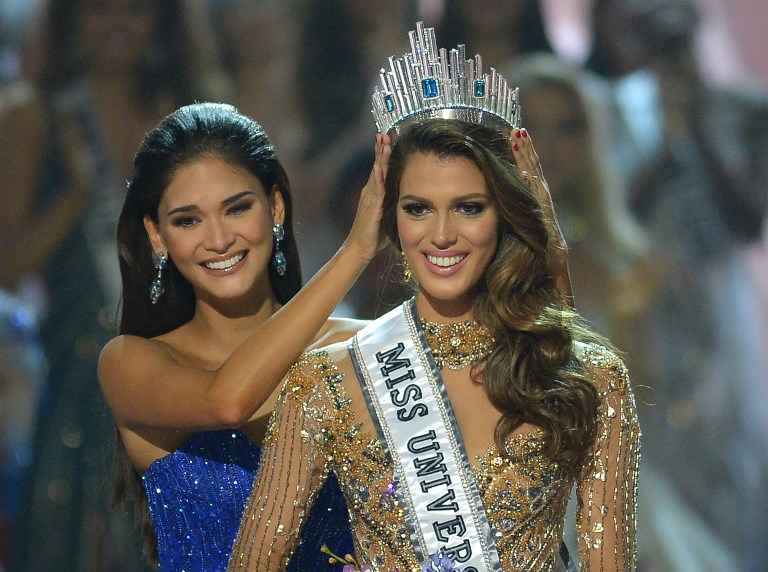
It’s just a few days before the 2018 Miss Universe pageant, and many Pinoy fans — who playfully call each other “bakla” (“gay”) — are sharing opinions and predictions across various Facebook groups about how the competition will play out.
Not all male fans pitching in on the forum conversations are gay, of course, but it’s widely recognized that the pageant industry’s most visible and vocal supporters in the Philippines are members of the LGBT+ community.
As beauty pageants continue to be called out as sexist or retrograde in other parts of the world, here in the Philippines, they continue to survive as celebrations of femininity — thanks in part to gay men.
They’re grateful for these contests, where for just a few hours, they can live out their fantasies through their favorite queens. As they watch each contestant step out on stage, what they see in the spotlight is glamor, grace, and the representation of cultural pride that each woman carries confidently on her sky-high stilettos.
